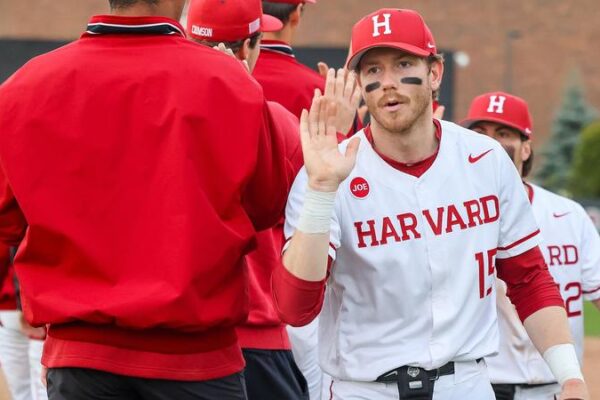The Last “Drum” Beat – University of Texas Athletics
If, as our old friend William Shakespeare tells us, “All the world’s a stage…and all the men and women merely players…,” then the Special Events Center at The University has hosted center stages for 44 years.
And there have been many, many players.
Ride with me my friends, but to understand the story, you have to also understand the times. And that will require dispensing with the belief and reality of today’s technology, and the accepting of a sustaining human belief that “if you build it, they will come.”
Our story begins more than 70 years ago, when the country was moving past the years of the Great Depression and World War II.
Jack Gray was a young man who had been an outstanding player at Texas in the mid-1930s, leading the Southwest Conference in scoring for three straight years and perfecting a one-hand “push” shot, which would change the game completely as it evolved into today’s one-hand “jump” shot. Gray had taken over as head basketball coach in 1937, and in a coaching stint interrupted by World War II, he returned to finish his career with a record of 194-97 (.667), before leaving for a highly successful career in the oil business.
But before he left Texas, Gray dreamed of a grand future for Texas Basketball. When his team in 1946-47 lost a heartbreaker in the NCAA Final Four to Oklahoma, 55-54 and ended the season with a 26-2 mark, folks back home were packing Gregory Gym, with standing room only crowds of well over the 7,200 capacity.
Gray had talked of a new arena, and the possibility of converting an old National Guard Armory building into a basketball facility, bounced high on the wish list. But with Gray’s departure, Texas Basketball slowly disappeared from the national stage. In the early 1960s, it showed some signs of life under former Duke head coach Harold Bradley, and in 1972 Leon Black’s team shocked the country with a NCAA Tournament upset of highly-regarded Houston.
And that was when a new actor entered the stage.
Frank C. Erwin Jr., was the singular most powerful man of his time. His power came from politics and friendships, and as the longtime chairman of the Texas Board of Regents, he had made athletics at The University his personal cause.
When Texas and Houston played a season-opening football game in 1968, Texas Memorial Stadium seated 66,000 fans. When you included the students of Texas and Houston, that took roughly half of the seats—given as free, or greatly reduced tickets—to the students. While athletics director and head football coach Darrell Royal was busy building a football dynasty on the field, Erwin set about building them a place to play. And it did not matter who, or what, got in his way.
When a group of young protesters known at the time as “hippies” staged a sit-in on some trees that had to be taken down to move a road to enlarge the stadium’s west side, Erwin ordered the arborists to cut down the trees—in some cases with the protesters scrambling to safety as the saws began.
Three years later, the Stadium’s west side, with 15,000 seats atop an eleven-story building, was dedicated. Erwin followed that by spearheading the construction of the baseball stadium and the swim center. When Texas’ men’s golf team had reached national stature with the recruitment of Tom Kite and Ben Crenshaw, the Southwest Conference was declaring its champion using a “match-play” format, which was more friendly to the average golfers than to the elite like Ben and Tom.
The option, was to withdraw from the SWC in the sport of golf.
It should be noted that Frank Erwin didn’t “threaten.”
He just “did.”
The record will show that while Texas was winning the NCAA championship in 1971 and Kite and Crenshaw were winning national individual honors, Texas did not win, nor did they play for, the Southwest Conference title. In 1972 the SWC changed its championship tournament to stroke play, and Texas returned to the league in golf.
The remaining jewel, of course, was basketball. Leon Black, who coached the Longhorns from 1968-76, used to carry an architect’s drawing of a proposed new arena in his briefcase as he went recruiting. Finally, with Erwin’s pushing, construction began on a new facility that would house basketball at Texas.
It would be, by any standard, a phenomenal events center.
Folks said, with the massive drapes and the circular arena, you could host two New York stage plays at the same time. From the circus to John Denver to Tina Turner to Pavarotti to Springsteen to conferences and graduations, it hosted it all. And, they were right, “if you build it, they will come.”
Erwin’s dream of building basketball, and putting Texas back on the grand stage of the collegiate sport, would happen.
And to make that occur, two very different people, with a common love of the game, would be there to open the building. Destiny was about to bring Jody Conradt and Abe Lemons together.
As Title IX became a national law and a ground-breaking philosophy, athletics across the nation began to change. Federal law declared that universities had to provide equal opportunity to men and women. Schools scrambled to find how they could make that happen, threatening, in some cases, established men’s sports. UCLA, which had one of the nation’s top men’s swimming programs, dropped the sport.
But at Texas, working with the women’s athletics leaders and the administration, Erwin and Royal forged a partnership. The law said “a university” must provide. It did not say the funds had to come from the men’s athletics department. So Texas, using what was called “the Presidential Discretionary Fund,” funded the women’s program.
In time that funding method would change, and other schools would begin to also fund their programs, but at the start, Texas was unique.
Jody Conradt was the head basketball coach at UT Arlington when she was hired to come to Texas in 1976. At the same time, Darrell Royal was convincing his old friend Lemons to take the challenge of restoring the glory of the Texas Men’s team.
“I remember coming to the state UIL Girls Tournament in Gregory Gym when I was a kid,” says Conradt, a native of Goldwaithe, Texas, which was exactly 105 miles away from Austin on the way to West Texas. “It was like walking into a palace.”
Lemons had successful careers at Oklahoma City University and Pan American, and he was on the road recruiting when Royal called him about replacing Leon Black, who had resigned following the 1976 season.
A sports writer asked Abe at his opening press conference, “what were the conditions under which you were hired?” To which Lemons responded, after a brief pause, “Oh, it was kinda rainy….cold really… I just wanted to see how the fast guns lived.” The wit, and wisdom, of Abe Lemons had arrived.
Even with the backing of Erwin, there were clashes between philosophies. Some who ran the building saw it as a Mecca for theatre and concerts. Basketball enthusiasts saw it as the entrance to the Promised Land. There was even a conflict between some people at the building and Lemons over the team’s right to practice in the arena, because of other events, forcing the team to practice in Gregory Gym. Lemons did not help matters when he quipped, “We built a building that seats 16,000 but can only park two cars.”
As season tickets were sold to basketball games (which at first included a doubleheader as the women played the first game and the men the second), the men’s Sports Information Office took on the challenge of promoting the new showplace.
They say that confession is good for the soul, so with that said, here is my story:
When the pictures of the architect’s drawings came out, the building appeared to me to look like my mother’s Samsonite luggage hat box. Or, on second thought, it looked like a giant…snare drum.
So on the cover of the media guide for the 1976-77 season, I ran the architect’s drawing, with the words, “For years, Texas basketball fans have waited for something Super. As in ‘THE SUPER DRUM!”
My bosses loved it. Erwin loved it. The folks who ran the new building did not love it.
Outraged, they protested that they were having to attract concerts and acts, and the symbolism of the reverberation of a “drum” would fly firmly in the face of that. They even took their case to the UT VP who was over the Special Events Center and the athletics department. Soon, an edict came down. Under no circumstances was the title “The Super Drum” to be used in any publication, or advertisement.
Okay, gang, I told you back at the beginning that the esteemed Bard, Shakespeare himself, had said there were many “players” in this gig. So when Bill Ellington, the beloved Associate AD just below Royal himself got the memo, he called the VP in charge.
“Are you sitting down?” he asked.
“Yes,” came the hesitant reply.
“Well,” said Ellington. “We have a small problem here. Because we made a deal with all of the banks in Austin to include a season ticket flyer in all of their bank statements. And right now, at the post office, they have 185,000 of those ready to go in the mail.
“And, it has that picture and that piece about “The SUPER DRUM…and I just wondered what you would like me to do about the cost of the fliers, and the problem we now have with the banks and the United States Postal Service?”
There is no record of his response, and remember, I mentioned technology. There was no iPhone camera, face time or Zoom call to capture it.
But, that afternoon, the bank statements were mailed, and forever and always, The University of Texas Special Events Center, later to be named after his death for the late Frank C. Erwin, Jr., has universally been known as “The Drum.”
On Feb. 26, 1977, Lemons’ first team lost a Southwest Conference Tournament “play-in game” to Baylor, 72-70, in the final men’s game in Gregory Gym. Jody’s first team went 36-10, playing all but 10 games on the road.

Jody never dreamt of coaching a team in the Special Events Center. She had taken a sport which in her high school days played a mid-court game where players never ran the complete 94-feet floor. Girls’ basketball was limited to the playing of forward (who could shoot the ball at their end) to guards who tried to stop them.
And while seeing that state tournament was inspiring to a young teenager from Central Texas, dreaming of an arena the size Texas entered in 1977 hadn’t gotten to the stage’s footlights.
The Special Events Center was massive, impressive, and beautiful. But the women’s locker rooms still had men’s urinals to go with the standard toilets. Growing pains, however, would be short lived.
“I remember thinking, we will never fill this building for women’s basketball,” she says. And yet, when Jody’s program took off and the men’s team slumped in the mid-1980s, it was women’s basketball that grabbed the headlines and the TV coverage. And at two Final Fours which Texas hosted, the arena was full. Jody Conradt was on her way to the Basketball Hall of Fame.
In the midst of that time, she had bonded with Lemons. Abe was crusty, and she was not. Abe’s wife, Betty Jo, wouldn’t—in his words—”say ‘damn’ if she dropped a cake.” Abe respected Jody for her knowledge and love of the game they shared. And when he died, Jody, along with Rick Barnes, the Texas men’s coach at the time, took some selected staff aboard a school plane to Oklahoma City for the funeral.
Most of all, they taught their kids about life.
Ron Baxter knew. Baxter was player of the year in Los Angeles when Leon Black’s staff convinced him to come to Texas. He arrived for his recruiting visit the first week Abe was on the UT campus as the new coach.
Like Jody and others who shared that special last year in Gregory, Baxter has fond memories of the old building, and the people who played there. He also remembers the setting, and the historic pine floor. It, and the floor in the Texas Union Ballroom, were unique. Both were four inches deep and provided perfect spring and bounce.
It was a great home court. The students were right on top of you.
While the last year in Gregory might have been one of nostalgia, the first year in the new building was incredible.
Playing as part of a doubleheader on November 29, 1977, Jody’s women defeated Temple JC in the first game ever in the arena, 67-64. In the second game between the men and Oklahoma, the Longhorns beat the Sooners, 83-76.
“There was no other game in town,” remembers Baxter. “There were no television networks carrying 100 games. Our other sports were very good. Football (in 1977) had started it. Earl won the Heisman. Baseball the spring before had won 34 straight games. The students came in and supported us.”
As it turned out, the season would be as magical as the building.
“We had a great point guard in Junior (Johnny Moore), Jim Krivacs could hit from 30 feet, Gary Goodner was a great athlete who gave up part of his offensive game for the team. And Tyrone Branyan (a 6-7 forward) was the missing piece. He made us what we were.”
And, of course, there was Baxter. He would score more points (1,879 to be exact) than any male player in Texas history at the time.
Lemons would play to the crowd, playing an “awe shucks” role as an underdog. When Texas went to Centenary and played at the school that had produced the legendary Robert Parrish, the ‘Horns won, 105-73. After the game, the Centenary players were quoted as saying, “that’s the worst team we have played this year.” Lemons smiled, knowingly, and then told his team, “we’ve got them all right where we want them.”
But it would be at the Milwaukee Classic hosted by defending NCAA champion Marquette that would really make the difference.
“We lost 65-56,” Baxter recalled. “But we realized that we should have won. We scored only 56 points and lost by nine. We believed, for the first time, that we could play with anybody.”
And away they went. They went unbeaten at home through 15 games, including wins over Temple and Nebraska to advance to the Final Four of the National Invitation Tournament—at a time when only 32 teams qualified for the NCAAs.
There, at Madison Square Garden, they hammered Rutgers and NC State to win the championship. Lemons, who was named National Coach of the Year, easily charmed the usually cynical New York media. The 1977-78 Men’s team logged a 26-5 record, tying the single-season mark for most wins in a season.
The following year, Texas sold season ticket packages to the students for the first time and by the start of the season had sold out the arena except for some visitor seats to 15,500 patrons.
At a banquet at the end of that 1977-78 season, we resurrected a line from the popular movie of the time, “Butch Cassidy and the Sundance Kid.” Surprised and surrounded by an unknown foe, one of the heroes exclaimed, “Who Are Those Guys?”
“Who are those guys?”
They range from the skill of Annette Smith Knight, Clarissa Davis and Edwina Brown to the tenacity of Kamie Ethridge and Jamie Carey and the heart of a little kid named Eryn McMahan; to the unparalleled excellence of the “Texas BMW” (Lance Blanks, Travis Mays and Joey Wright), B.J. Tyler, Reggie Freeman, T.J. Ford, LaMarcus Aldridge and Kevin Durant and the grit and spirit of Royal Ivey and P.J. Tucker. There are too many to mention here because for each named, another is unintentionally left out, and this final season will bring new names, and new stars, who will join their ranks.
It would be wrong to forget the hundreds of workers and administrators who made such an amazing place work for so many years. When you walk through the building and down the halls, read the names on the plaques of those who gave the money so that learning and discipline would coincide with athletic excellence and mental toughness.
Frank C. Erwin, Jr., died of a heart attack on Oct. 1, 1980. He was sixty years old. They held his funeral in the building which would later bear his name.
Abe Lemons’ Texas career ended abruptly when he was fired after the 1982 season—a year that had begun with a 14-0 record and a No. 5 national ranking before one of his stars, sophomore Mike Wacker, suffered a season-ending injury when he slipped on a dusty tartan floor at Baylor’s Heart of Texas Coliseum and shattered his knee cap.
The men’s program remained in shock for the six years of the Bob Weltlich era, until Texas hired Tom Penders, who brought the swagger back to Texas Basketball. Penders’ “Runnin’ Horns” put the Longhorn men back on the national stage. He quickly won over the Texas fan base. In 1991, he and Jody took a carload of basketballs to a meeting hall in Austin’s East side, introducing young kids to a new program that would become known as “The Neighborhood Longhorns.” Through the years, hundreds of boys and girls participated in summer camps at the basketball facility.
When Penders exited, the center stage soon belonged to Rick Barnes, who brought stability, credibility and excellence to the program. It was Barnes who, in 2001, convinced The University of the need for construction of the Cooley Pavilion, which housed new dressing rooms for the men and women, as well as meeting rooms and two gymnasiums—finally ending the long struggle for space to practice.
After a highly successful career in which he became the winningest men’s coach in program history and taking the team to 16 NCAA Tournament berths in 17 years including an appearance in the Final Four, Barnes left in the midst of a difference of opinion with a new athletics director, and immediately was named the head coach at Tennessee. Shaka Smart followed him, becoming the ‘Horns first men’s black basketball coach until he resigned to accept the head coaching position at Marquette following the 2021 season.
Jody Conradt stepped down following the 2007 season after a career that included exactly 900 wins. She moved to a position as a “special assistant” in the athletics department—a job she still holds today. Highly-respected Duke coach Gail Goestenkors took the job, followed by former UT assistant Karen Aston, who left following the 2020 season.
And now, as the building enters its final season, the center stage spotlight shifts to two coaches with ties to Austin and The University of Texas. Women’s coach Vic Schaefer, whose first UT team last season heightened expectations of a bright future, was actually born in Austin at Brackenridge Hospital, right across 15th Street from the basketball complex. Men’s first-year coach Chris Beard served as a student assistant for Penders’ teams in the 1990s, before graduating and taking off on a meteoric career that has made him one of the most respected coaches in the game.
Baxter said it best:
“Yeah, I will miss it,” he said. “I think about it every time I drive down I-35. I learned more than just basketball from Abe. I learned responsibility, and we learned how to play as a team. We cared about each other. He had one message ‘just do your job.’ The new building will be state of the art, and it will get the fans closer to the game, and that is what it should be all about.”
The game Jody and the coaches who worked with her and followed her has changed immensely since those days in Gregory with the sweeping hands of the big clock, high above the arena at the west end. The same can be said of the men’s coaches, who accepted the challenge of using a game to change a young person’s life. Basketball is unique among the high-profile sports in this country because it’s the only game where you see the players’ faces. There is no hat or helmet. You can see and feel the sweat and the joy and the tears.”
The Frank C. Erwin Center, and the Cooley Pavilion which later joined it as a place to practice, will pass into history. And there, we will be left with memories. Each in our own way. Because, to borrow much of what Shakespeare said, all the world really is a stage, and all of us, merely players. We have our entrances and our exits….and each, in our time, plays many parts.













